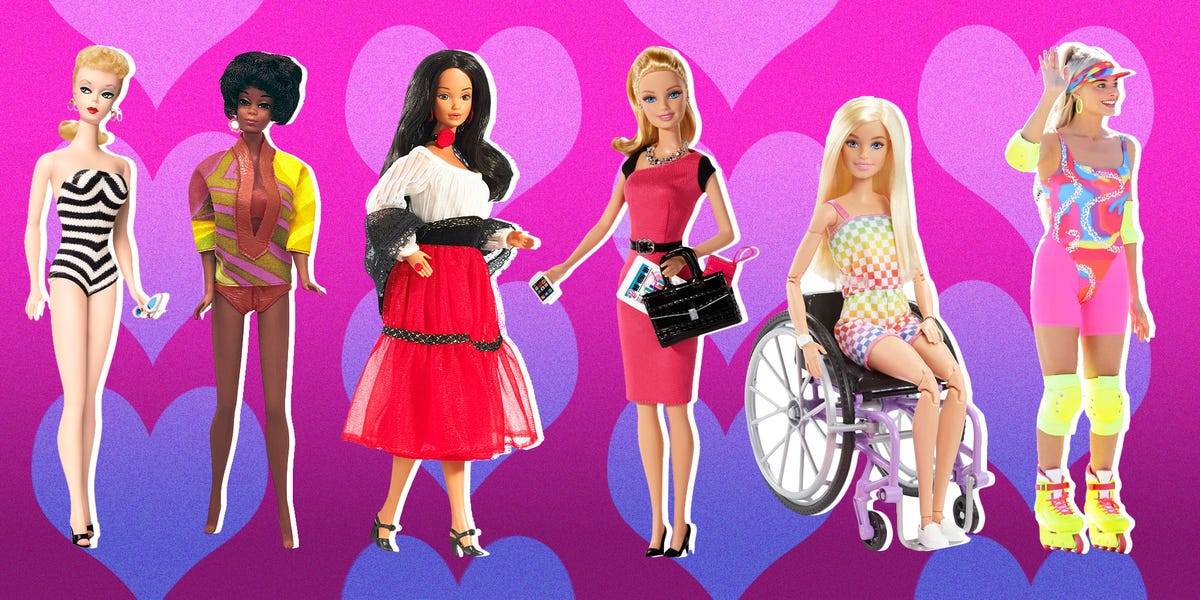Barbie became ‘prettier and prettier’ as the years went by
Mattel was keen to innovate and regularly released new dolls to reflect manufacturing advancements, including more posable ones with bendable limbs. The first talking doll came out in 1968, uttering phrases like “Help me fix my hair” and “I think I’ll call Ken.” A “Growing Up” version of Skipper came out in 1975, whose arm could be rotated to make her grow taller, get small breasts, and have a slimmer waistline.
Barbie’s style also changed over the years in response to fashion trends, demand from customers, and Mattel’s ideas.
Though Handler had wanted Barbie to be a blank canvas for young girls, Mattel’s advertising agency “wanted to play up the glamorous aspects,” she wrote. “Eventually, I began to lose the battle because consumers seemed to prefer the glamorous side of Barbie.”
“The designers made the doll prettier and prettier as the years went by because it became clear that little girls were not intimidated by Barbie’s looks,” Handler continued.
Deciding which outfits to manufacture was difficult because of the lag between Barbie’s clothes being designed and hitting stores. “We never tried to set fashion, we just tried to anticipate what the fashions were going to be by the time the product came on the market,” Handler wrote.
Ken changed over time, too. His physique was altered in 1963 to give him “broad shoulders, a tapered waist and somewhat more muscle” than previous models, “when his makers kept him on the scrawny side to make him easier to dress,” The New York Times wrote at the time. The publication described him as having “an earnest, unsophisticated look.”
In the late 1960s, both Barbie and Ken were restyled. Barbie had “plastic surgery,” giving her a “wider-eyed, less-sultry, more teenager-like face and longer hair,” while Ken got “a hunkier build, a handsomer face, longer hair, and a healthier skin tone,” Handler wrote.
From the early 1970s, Ken “reflected society’s attitude that it was now acceptable for men to primp and be vain,” including the release of a “Mod Hair Ken” with shoulder-length, rooted hair, Handler wrote.
Over the decades, Barbie has received fierce criticism for creating unrealistic body standards. At the 1970 Women’s Strike for Equality in New York City, some marchers chanted “I am not a Barbie doll,” as The Smithsonian Magazine reported.
Barbie sales started to flag in the early 1980s. Jill Barad, who took over the Barbie line in 1983, put this down to people thinking that the doll was sexist, per Gerber. A new advertising campaign marketed Barbie as a professional role model, using the tagline “we girls can do anything.” Careers Barbie has taken on in her more than 50-year lifetime include being an Air Force pilot, scuba diver, and NASCAR driver.
Particularly controversial dolls Mattel released over the years included a pregnant version of Midge, the “Earring Magic Ken” clad in a lavender mesh shirt and purple pleather vest, the “Teen Talk Barbie” who said phrases like “Math class is tough,” and 1965’s “Slumber Party Barbie” who came with a “don’t eat” diet book.
Read the full article here





